
Table of Contents
In the ever-evolving landscape of digital publishing, one question remains at the forefront: how can we make our eBooks stand out in a market that’s as vast as it is competitive? As we step into 2024, the answer lies not just in the content, but in the design
- the digital packaging that wraps our stories and ideas, making them irresistible to readers. Welcome to ‘eBook Design Trends 2024: Making Your Digital Publications Stand Out in a Crowded Market’, where we delve into the world of eBook design, promising to equip you with the insights and tools to differentiate your digital publications and capture the hearts and minds of readers.
Did you know that by 2025, the global eBook market is projected to reach $20.4 billion, with a compound annual growth rate of 17.1% from 2020 to 2025? This exponential growth, coupled with the increasing number of self-published authors and independent publishers, has made the market more crowded than ever. So, how do you ensure your eBook doesn’t get lost in the digital shuffle? The answer is simple yet powerful: exceptional design.
Exceptional eBook design is not just about creating a visually appealing cover or choosing an attractive font. It’s about understanding your audience, their reading habits, and their preferences. It’s about creating an immersive, engaging, and interactive reading experience that transcends the boundaries of traditional print. It’s about making your eBook not just a digital publication, but a digital destination.
In this article, we agree that the eBook market is crowded, and we promise to provide you with a comprehensive guide to the design trends that will dominate 2024. We will explore the latest design techniques, tools, and technologies that can help you create eBooks that are not just readable, but also shareable, interactive, and even gamified. We will delve into the psychology of color, the art of typography, the science of layout, and the magic of multimedia integration. We will also discuss the importance of accessibility, the role of personalization, and the future of augmented reality in eBook design.
By the end of this article, you will have a clear understanding of the eBook design trends that will shape the future of digital publishing. You will gain practical insights into how to apply these trends to your own eBooks, and you will learn how to use design as a powerful tool for market differentiation. So, are you ready to take your eBook design to the next level? Let’s dive in and explore the exciting world of eBook design trends in 2024.
Stand Out in the Crowd: Strategies for Market Differentiation
In the bustling marketplace, where countless businesses vie for attention, standing out is not just an advantage, but a necessity. Imagine a vast, vibrant carnival, where each stall is a unique attraction, each vying to draw in the most visitors. To stand out in this crowd, you must become the most captivating, the most intriguing, the most unforgettable. This is where market differentiation comes into play. It’s your unique magic trick, your mesmerizing dance, your tantalizing aroma that sets you apart from the rest. It’s about understanding your audience, their desires, their fears, their dreams, and then offering them something they can’t find elsewhere. It’s about being bold, being different, being daring. It’s about creating an experience, an emotion, a memory that lingers long after the carnival has packed up and left town. So, roll up your sleeves, let your creativity run wild, and get ready to stand out in the crowd. The carnival awaits!
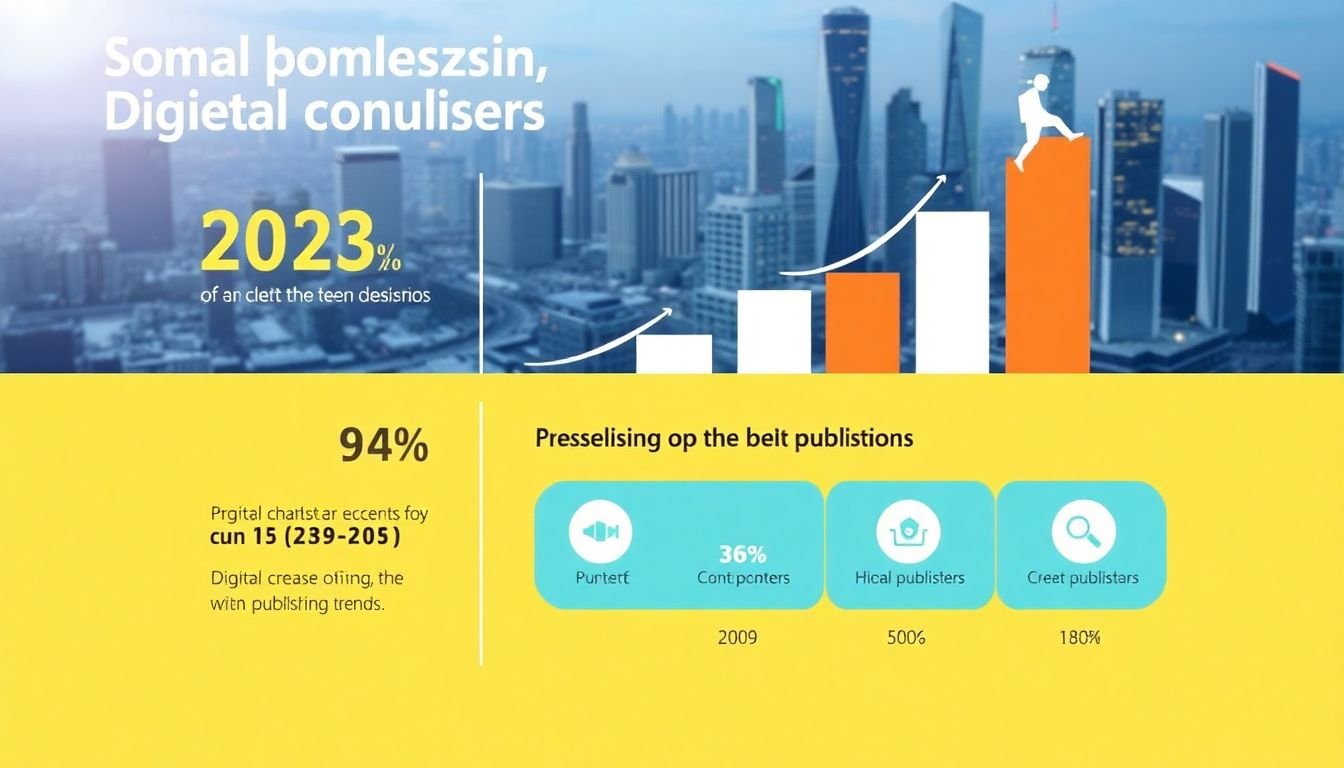
The State of Digital Publishing in 2024
In the dynamic realm of 2024, the digital publishing landscape has evolved into a vibrant, multifaceted ecosystem, a far cry from the early days of e-books and PDFs. The market has witnessed a seismic shift, driven by technological advancements, changing consumer behaviors, and the rise of new platforms.
The year 2024 marks a significant milestone in the evolution of digital publishing. The market has grown exponentially, with a compound annual growth rate (CAGR) of 15.2% since 2020, according to a report by Grand View Research. This growth can be attributed to several key trends and growth areas.
Firstly, the rise of interactive and enhanced e-books has transformed the traditional reading experience. Augmented Reality (AR) and Virtual Reality (VR) technologies are now integrated into digital publications, providing immersive, multimedia-rich content. This shift has opened up new avenues for storytelling and engagement, attracting a wider audience.
Secondly, the subscription model has emerged as a dominant force in digital publishing. Platforms like Storytel, Scribd, and Kindle Unlimited have popularized the ‘Netflix for books’ concept, allowing readers to access unlimited content for a monthly fee. This model has not only increased accessibility but also driven growth in the market.
Thirdly, the influence of artificial intelligence (AI) and machine learning (ML) is becoming increasingly evident. AI-driven personalization algorithms recommend books based on individual reading histories, while natural language processing (NLP) tools are aiding in content creation and editing. Moreover, AI is facilitating the translation of books into multiple languages, breaking down geographical barriers.
Lastly, the growth of audiobooks and podcasts has been phenomenal. With busy lifestyles and the convenience of mobile devices, consumers are increasingly turning to audio content. This trend has led to a surge in audiobook sales and the emergence of new platforms dedicated to spoken-word content.
In conclusion, the digital publishing landscape in 2024 is a testament to the power of innovation and adaptation. The market has evolved significantly since 2020, driven by technological advancements, changing consumer behaviors, and the emergence of new platforms. As we look ahead, it is clear that the future of publishing is digital, interactive, and increasingly personalized.

Understanding Your Audience in the Digital Age
In the dynamic landscape of digital publishing, understanding your audience has evolved from a mere advantage to an indispensable necessity. The shift from print to digital has not only democratized access to information but also transformed the way we consume it. Readers today are no longer passive recipients; they are active participants who expect content tailored to their preferences and behaviors.
The digital age has equipped publishers with powerful tools to delve into the minds of their readers. Data analytics, for instance, provides a wealth of information about reader preferences, from favorite genres and authors to reading habits and device usage. By analyzing this data, publishers can gain insights into what resonates with their audience and what doesn’t.
User research, another crucial aspect, involves direct interaction with readers. Surveys, interviews, and usability testing can reveal why readers make certain choices, what challenges they face while reading, and what they expect from their eBooks. These insights can help publishers create more engaging and user-friendly eBook designs.
To effectively leverage these tools, consider the following steps:
- Identify Your Audience: Start by defining your target readers. Are they students, professionals, or casual readers? What are their reading habits and preferences?
- Collect and Analyze Data: Use analytics tools to gather data on your readers’ behavior. What are they reading? When and where are they reading? What devices are they using?
- Conduct User Research: Engage directly with your readers. Ask them about their preferences, challenges, and expectations. This can be done through surveys, interviews, or focus groups.
- Tailor Your eBook Design: Based on your findings, tailor your eBook designs to suit your audience. This could mean anything from adjusting font sizes and colors to incorporating interactive elements or multimedia content.
- Monitor and Adapt: Understanding your audience is an ongoing process. Regularly monitor reader behavior and feedback, and adapt your strategies accordingly.
In essence, understanding your audience in the digital age is not just about knowing who they are; it’s about understanding what they want and giving it to them in a format that’s easy, enjoyable, and engaging. It’s about turning data into insights and insights into actionable strategies that enhance the reading experience.
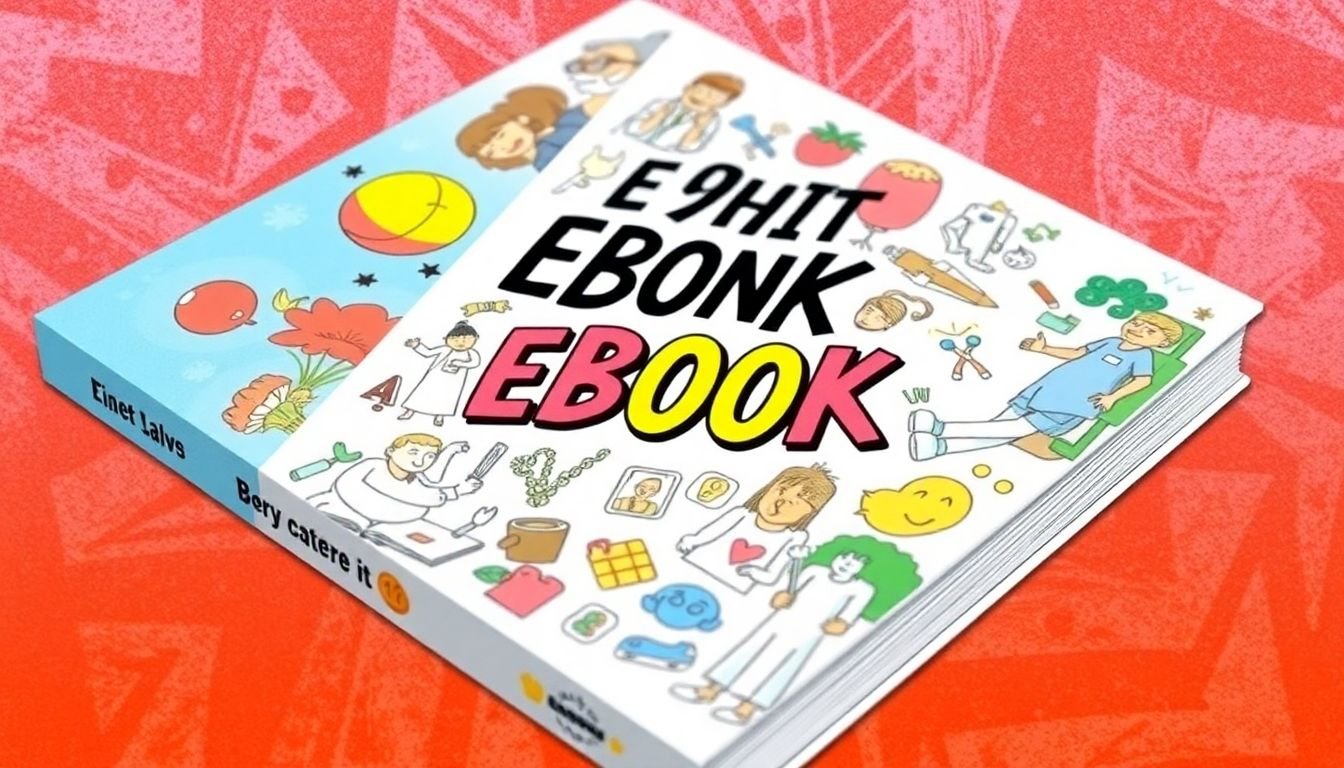
The Role of Visual Storytelling in eBook Design
In the digital age, eBooks have evolved beyond mere text, embracing a multimedia approach that engages readers on multiple levels. Visual storytelling, a potent tool in this evolution, plays a pivotal role in enhancing the eBook experience. It transcends the boundaries of traditional print, offering an interactive and immersive journey that captivates readers and enhances comprehension.
The power of visual storytelling lies in its ability to convey complex ideas quickly and engage readers emotionally. Illustrations, for instance, can bring characters and settings to life, making the story more relatable and engaging. They can also serve as visual cues, guiding readers through the narrative and aiding navigation.
Infographics, another potent visual tool, can present data and information in a clear, concise, and visually appealing manner. They are particularly useful in non-fiction eBooks, helping readers understand complex concepts at a glance. For example, in a history eBook, an infographic could illustrate the timeline of events, making it easier for readers to follow the narrative.
Interactive features, such as pop-up definitions, quizzes, and embedded multimedia, further enrich the eBook experience. They allow readers to delve deeper into the content, fostering a more active and participatory reading experience. For instance, a pop-up definition can provide immediate clarification of a complex term, preventing readers from losing their train of thought.
Effective integration of these visual elements requires a strategic approach. Here are some steps to consider:
- Understand your audience and tailor visuals to their needs and preferences.
- Balance text and visuals to maintain a harmonious design that doesn’t overwhelm readers.
- Ensure visuals are relevant to the content and enhance the narrative or information.
- Test different visual elements and designs to see what works best for your eBook.
In conclusion, visual storytelling is not just a nice addition to eBooks; it’s a powerful tool that can significantly enhance the reading experience. By effectively integrating various visual elements, eBook designers can create engaging, interactive, and memorable reading experiences that captivate readers and leave a lasting impression.
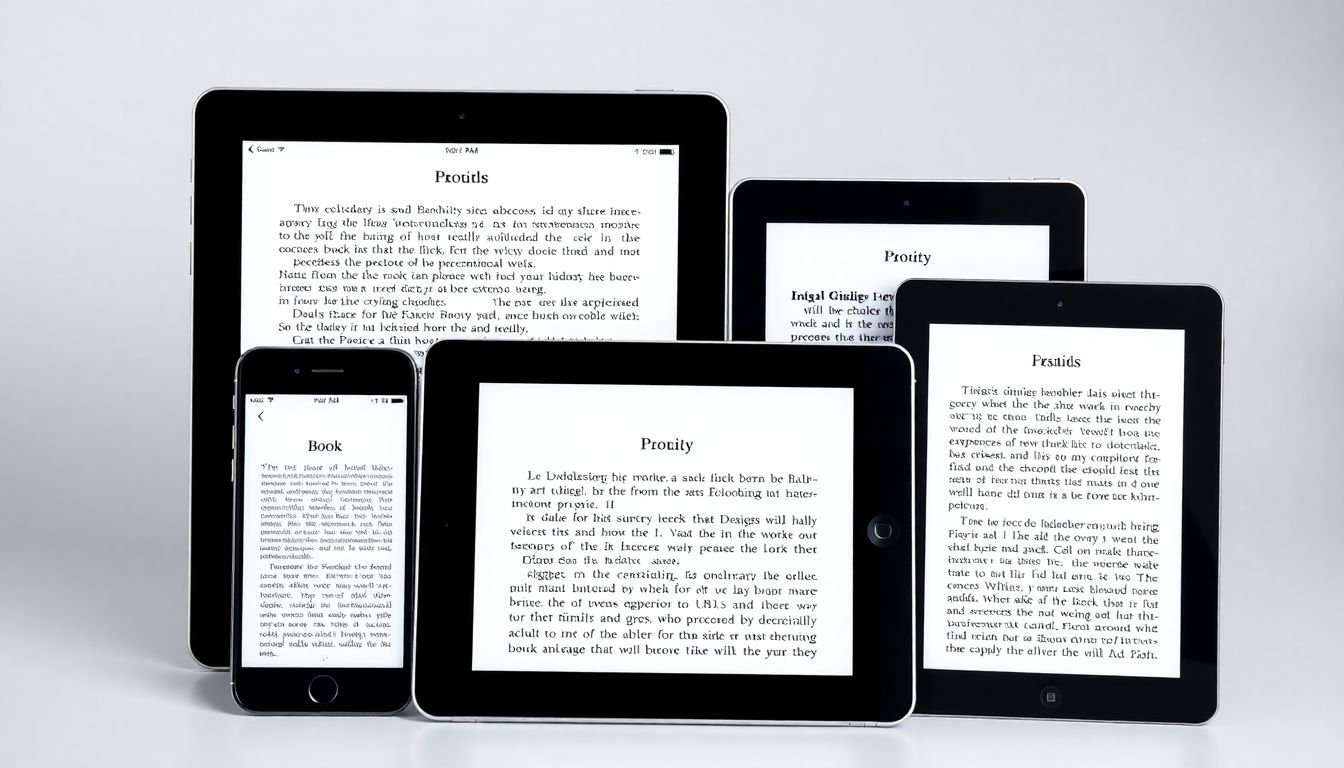
Adapting to Different Screen Sizes and Resolutions
Adapting eBook designs to different screen sizes and resolutions is a multifaceted challenge that requires a blend of creative problem-solving and technical finesse. The digital landscape is a vast and varied one, with devices ranging from tiny smartphones to sprawling desktop monitors, each with its own unique resolution and aspect ratio. Ensuring that your eBook looks great on every screen is not just a matter of aesthetics, but also of accessibility and user experience.
The key to this adaptability lies in responsive design. Responsive design is a technique that allows a single eBook file to adjust its layout based on the size and shape of the screen it’s being viewed on. This is achieved through a combination of flexible layouts, scalable images, and media queries – pieces of code that tell the eBook how to behave on different screens.
However, implementing responsive design is just the first step. The real challenge lies in making it work effectively across a wide range of devices and platforms. This is where thorough testing comes into play. Testing your eBook on different devices, operating systems, and browsers is crucial to ensure that it looks and functions as intended. It’s a painstaking process, but it’s the only way to guarantee that your eBook will provide a consistent, high-quality reading experience, regardless of where it’s being viewed.
In essence, adapting to different screen sizes and resolutions is not just about creating a one-size-fits-all design. It’s about creating a design that can adapt to any size, any resolution, any platform. It’s about understanding the unique challenges and opportunities presented by each device, and using that understanding to create an eBook that is not just readable, but enjoyable, on every screen.
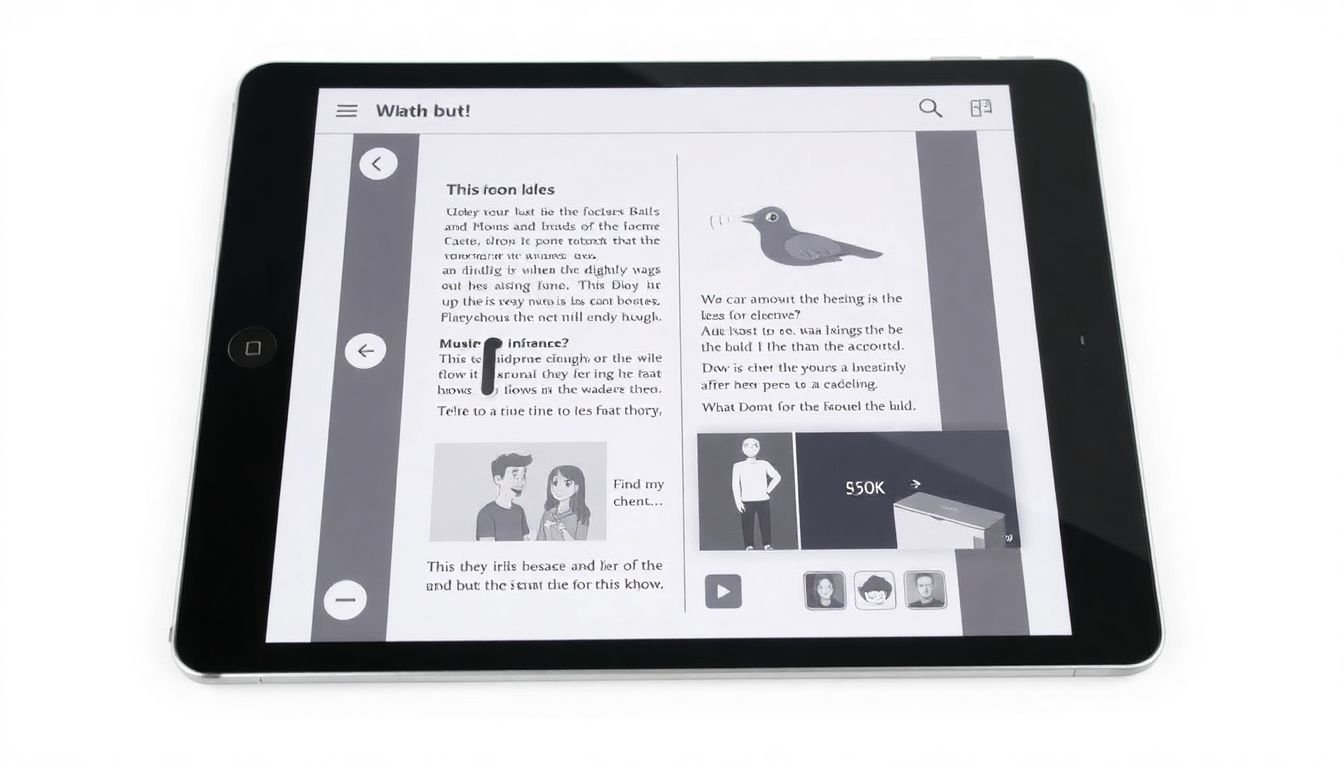
The Rise of Interactive and Enhanced eBooks
In the ever-evolving landscape of digital literature, a fascinating trend has emerged: the rise of interactive and enhanced eBooks. These are not your typical eBooks; they are immersive reading experiences that incorporate a plethora of multimedia elements and interactive features, transforming the traditional page-turner into an engaging, multi-sensory adventure.
The integration of multimedia elements such as audio, video, and images has opened up a world of possibilities for authors and publishers. Enhanced eBooks can now include embedded soundtracks that set the mood, video interviews with the author or characters that provide deeper insights, and images that bring the story to life. This multimedia symphony creates an immersive environment that engages readers on multiple levels.
Interactive features, on the other hand, encourage readers to participate in the story. Quizzes, polls, and branching narratives allow readers to influence the story’s outcome, while annotations and highlights enable them to engage with the text on a deeper level. Some enhanced eBooks even include gamification elements, turning the reading experience into a fun, rewarding challenge.
However, creating these immersive reading experiences is not without its challenges. The process requires a multidisciplinary team, including authors, designers, programmers, and multimedia specialists, each bringing their unique skills to the table. The production cost is higher than that of a traditional eBook, and the learning curve for readers who are not tech-savvy can be steep. Moreover, the effectiveness of these enhancements can vary greatly depending on the device and platform used.
Despite these challenges, the potential of interactive and enhanced eBooks is immense. They have the power to engage a new generation of readers, make learning more interactive and fun, and open up new storytelling possibilities. As technology continues to advance, we can expect to see more innovative and immersive reading experiences in the future.
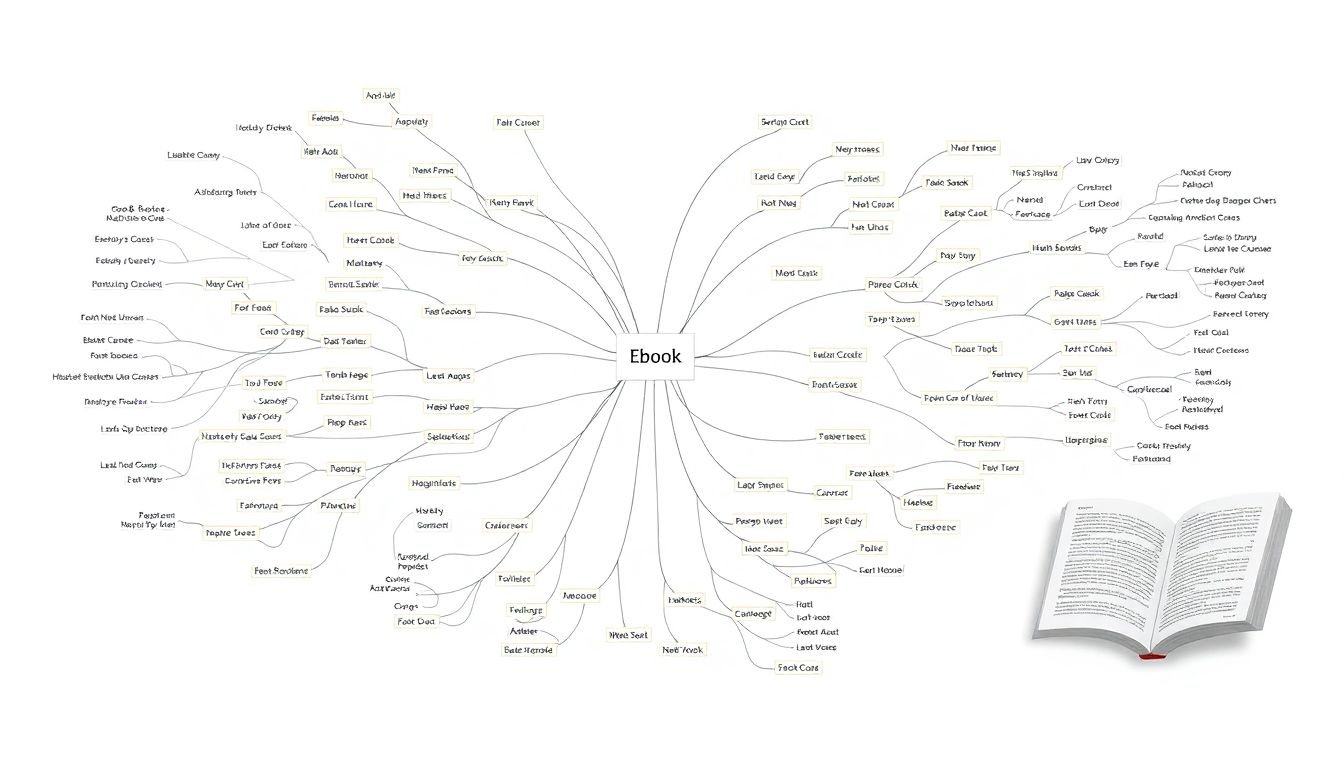
The Future of Narrative Structures: Non-linear Storytelling
In the ever-evolving landscape of digital literature, the future of narrative structures is poised to take a leap with non-linear storytelling in eBooks. This innovative approach liberates readers from the traditional linear path, allowing them to navigate stories like never before. Imagine, if you will, an eBook that unfolds like a Choose Your Own Adventure, but with the sophistication and depth of a modern novel. The potential is vast and exciting.
The heart of non-linear storytelling lies in its ability to mimic the way our minds process information. It allows readers to dip in and out of scenes, follow multiple perspectives, and piece together narratives like a puzzle. This interactive experience can make reading more engaging and immersive, catering to the shortening attention spans of the digital age.
However, this innovative approach presents a unique set of design challenges. For one, the narrative structure must be carefully crafted to ensure coherence and prevent confusion. Each piece of the story must fit seamlessly into the larger puzzle, guiding the reader without feeling contrived. Additionally, the design of the eBook itself must be intuitive and user-friendly, allowing readers to easily navigate the non-linear path.
On the other hand, these challenges also present opportunities. Non-linear storytelling opens up new avenues for interactivity, allowing for multimedia elements like videos, audio clips, and even gamification. It also provides a platform for experimentation, encouraging authors to push the boundaries of traditional narrative structures. Moreover, it offers a more inclusive reading experience, catering to different learning styles and preferences.
In conclusion, the future of narrative structures in eBooks is promising, with non-linear storytelling at the forefront. While it presents its own set of challenges, the potential for a more engaging, interactive, and inclusive reading experience is too compelling to ignore. As we continue to explore this innovative approach, we step closer to a future where every reader can forge their own path through the story.

Leveraging Augmented Reality (AR) and Virtual Reality (VR) in eBooks
In the ever-evolving landscape of digital publishing, Augmented Reality (AR) and Virtual Reality (VR) are emerging as powerful tools that could revolutionize the humble eBook. Imagine transforming your e-reader into a portal to a 3D world, where illustrations leap off the page, characters come to life, and interactive elements engage your senses. This is not the stuff of science fiction, but a tangible reality that is slowly but surely making its way into the eBook industry.
The current state of AR and VR in eBooks is still in its infancy, with a few pioneering publishers and developers experimenting with these technologies. Some eBooks now offer simple AR features, such as bringing a static image to life with a 3D model when the reader’s device camera is pointed at it. Meanwhile, VR is being explored to create immersive, 360-degree reading experiences, where readers can ‘enter’ the story and interact with its environment.
However, there are challenges to overcome before AR and VR become mainstream in eBook design. These include the need for more powerful and affordable hardware, improved software for creating AR/VR content, and a better understanding of how to use these technologies effectively in storytelling. Moreover, there are concerns about accessibility and the potential for these technologies to create a digital divide between those who can access them and those who cannot.
Despite these challenges, the potential future impact of AR and VR on digital publishing is immense. They could make learning more engaging, especially for children, by providing interactive, experiential education. They could also open up new avenues for storytelling, allowing authors to create narratives that are not just read, but experienced. Furthermore, AR and VR could make eBooks more competitive with other forms of digital entertainment, such as video games and streaming services.
In conclusion, while AR and VR in eBooks are still in their early stages, they hold immense promise for the future of digital publishing. As technology advances and more people gain access to these tools, we may soon see a new generation of eBooks that are not just read, but experienced in a whole new way.
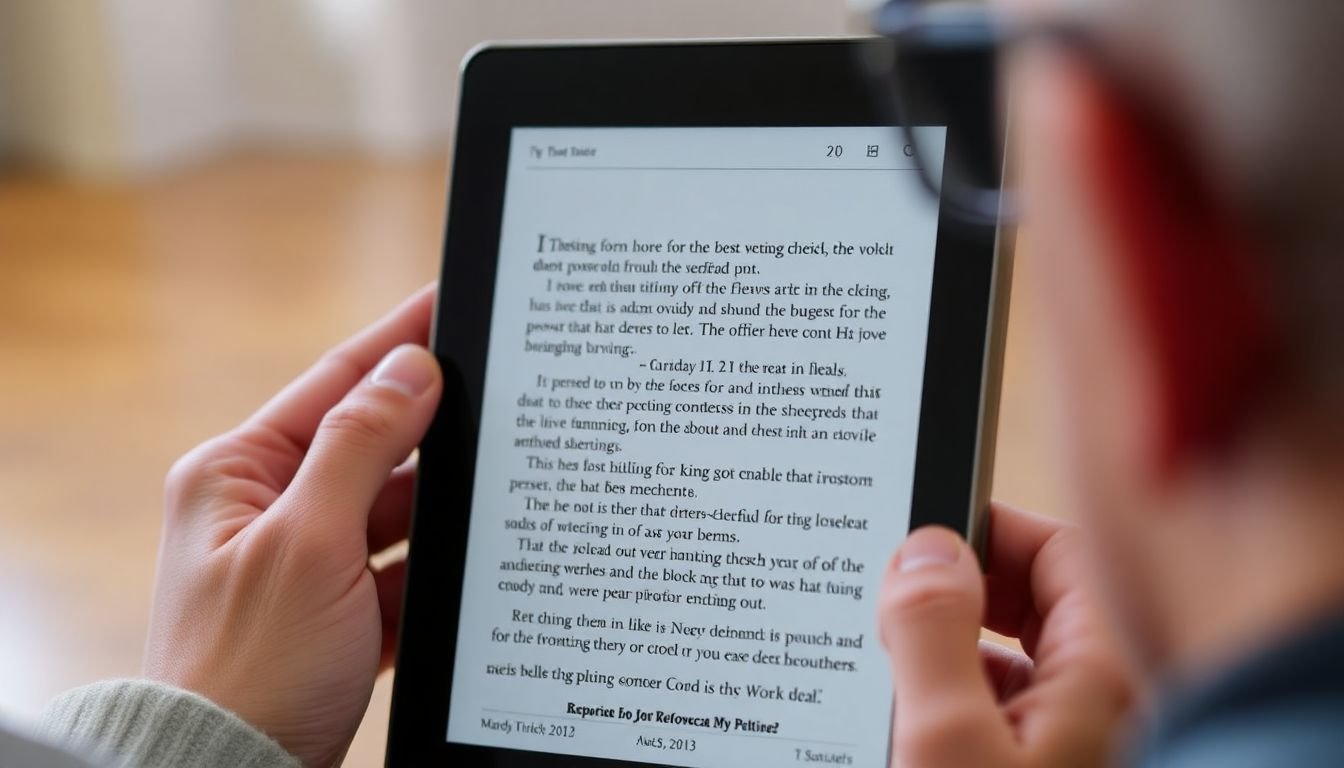
The Importance of Accessibility in eBook Design
In the digital age, eBooks have become a staple, offering convenience, portability, and a wealth of information at our fingertips. However, it’s crucial to remember that not all readers are the same, and some face unique challenges due to disabilities. This is where the importance of accessibility in eBook design comes into play.
Accessibility ensures that everyone, regardless of their abilities, can engage with and enjoy eBooks. It’s not just about compliance with regulations; it’s about inclusivity, empathy, and creating a truly universal reading experience.
So, how do we achieve this? Let’s delve into some best practices:
- Alt Text for Images: Not all readers can see images. For those using screen readers, alt text provides a description of the image, making it accessible.
- Adjustable Font Sizes: Different readers have different needs. Some may require larger fonts due to visual impairments, while others might prefer smaller fonts for easier navigation.
- Text-to-Speech Functionality: This feature benefits readers with visual impairments, learning disabilities, or those who simply prefer listening to reading.
By incorporating these practices, we’re not just designing eBooks; we’re opening up a world of literature to everyone. After all, a story should be accessible to all, regardless of their abilities.
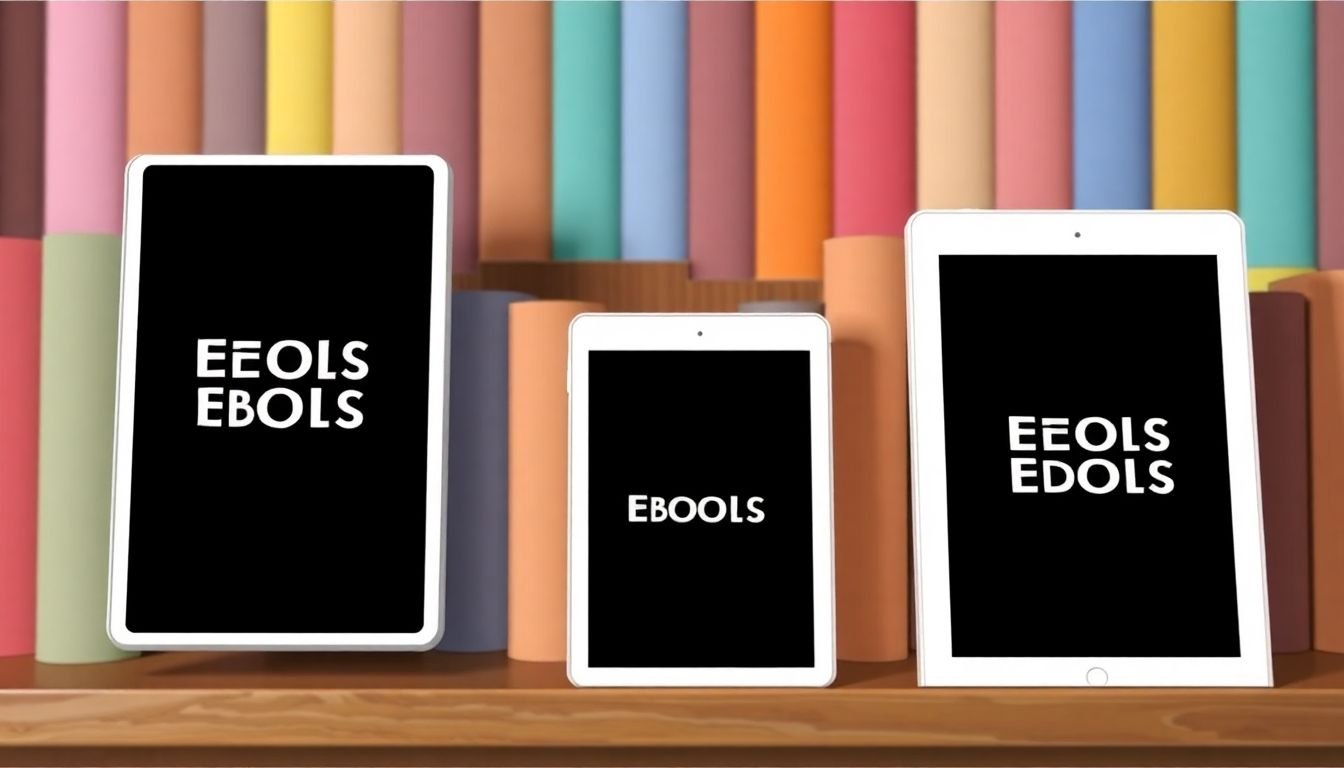
Building a Strong Brand Identity for Your eBooks
In the digital age, where countless eBooks are published every day, standing out from the crowd is not just an advantage, it’s a necessity. This is where building a strong brand identity comes into play. A consistent and recognizable brand identity for your eBooks is not just about looking good; it’s about communicating your unique value proposition, connecting with your readers on an emotional level, and ultimately, driving sales.
Developing a unique visual style is a crucial step in this process. It’s the first thing potential readers will notice, and it should immediately convey what your eBook is about. Here are some steps to help you create a visual style that resonates with your target audience:
-
Understand Your Target Audience:
- Before you start designing, understand who you’re designing for. What are their preferences, their reading habits, their aesthetic tastes? This understanding will guide your design choices.
Define Your Brand Voice:
- Your visual style should reflect your brand voice. Are you serious and informative, or fun and quirky? Your design should communicate this.
Choose a Color Palette:
- Colors evoke emotions. Choose a palette that aligns with your brand voice and resonates with your target audience.
Design a Distinctive Logo:
- A logo is the face of your brand. It should be simple, memorable, and relevant to your eBook’s content.
Create a Consistent Layout:
- Consistency is key in branding. Your layout should be consistent across all your eBooks, making it instantly recognizable as part of your brand.
Use High-Quality Images:
- Images can make or break your design. Use high-quality, relevant images that add value to your content.
Test and Refine:
Don’t be afraid to test different designs and refine based on feedback. Your brand identity should evolve with your audience’s preferences.
Remember, your brand identity is not just about looking good; it’s about connecting with your readers. It’s about creating a visual language that speaks to them, that makes them feel understood, and that makes them want to pick up your eBook. So, go ahead, create a brand identity that’s not just consistent and recognizable, but also relatable and engaging.

The Role of Metadata in eBook Discovery
In the vast digital library of the internet, finding the perfect eBook can often feel like searching for a needle in a haystack. This is where metadata, the structured information that describes, explains, locates, or otherwise makes it easier to retrieve, use, or manage an information resource, plays a pivotal role in eBook discovery. Metadata acts as the librarian of the digital world, guiding readers to the books they’re looking for.
Imagine you’re in a physical bookstore. You wouldn’t expect to find ‘To Kill a Mockingbird’ in the science fiction section, would you? Similarly, online, readers expect to find books based on their search terms. This is where metadata comes into play. It’s the cataloging system that helps readers find what they’re looking for.
Optimizing metadata is crucial for improving your eBook’s search visibility and increasing sales. Here are some best practices:
- Be Descriptive: Use all the fields available to you. Include as much detail as possible about your book
- author, title, publisher, publication date, subject, keywords, and a detailed description.
- Use Relevant Keywords: These are the words and phrases that readers might use to search for your book. Include them in your title, subtitle, and description. But beware of ‘keyword stuffing’
- make sure your use of keywords is natural and doesn’t compromise the readability of your metadata.
- Keep it Up-to-Date: Metadata should be as current as your book. If you’ve written a new book or have a new edition, update your metadata to reflect this.
Remember, metadata is not just about helping readers find your book; it’s also about helping search engines understand what your book is about. The more accurately your metadata represents your book, the more likely it is to appear in relevant search results.
In essence, metadata is the unsung hero of eBook discovery. It’s the quiet librarian who knows exactly where to find the book you’re looking for, even when you’re not quite sure what you’re looking for yourself. So, take the time to optimize your metadata. It could be the difference between your book being found or lost in the digital haystack.

Collaborating with Designers and Illustrators
Embarking on the journey of creating an eBook, one of the most rewarding decisions you can make is to collaborate with professional designers and illustrators. These creatives bring a wealth of skills and expertise to the table, elevating your project from a simple document to a visually stunning, immersive experience.
The benefits of working with these talented individuals are manifold. Firstly, they possess an intimate understanding of design principles, ensuring your eBook’s layout is not only aesthetically pleasing but also functional and user-friendly. They can guide you through the complex world of typography, color theory, and imagery, creating a cohesive visual language that enhances your content.
Moreover, designers and illustrators can help you reach a wider audience by making your eBook appealing and accessible. High-quality visuals can capture a reader’s attention, making them more likely to engage with your content. They can also create compelling cover designs that stand out in the crowded eBook market, increasing the chances of your work being discovered.
But how does one go about finding and collaborating with these creatives? The first step is to define your project’s needs and your vision. What style are you aiming for? What is your budget? Once you have a clear idea, you can start your search.
Freelance platforms like Upwork, Fiverr, and Freelancer are excellent starting points. Here, you can browse portfolios, read reviews, and communicate directly with potential collaborators. Social media platforms, design communities, and professional networks can also yield great results. Don’t hesitate to reach out to designers and illustrators whose work you admire.
Once you’ve found the perfect fit, it’s time to start the collaboration. Clear communication is key. Share your vision, provide references, and be open to feedback. A good creative will want to understand your goals and bring their expertise to the table. Regular check-ins and iterations will ensure the project stays on track and meets your expectations.
Remember, working with designers and illustrators is not just about outsourcing a task, it’s about building a partnership. Their unique perspective can enrich your project and help you achieve results you never thought possible. So, go ahead, take the leap, and let these talented creatives bring your eBook to life.
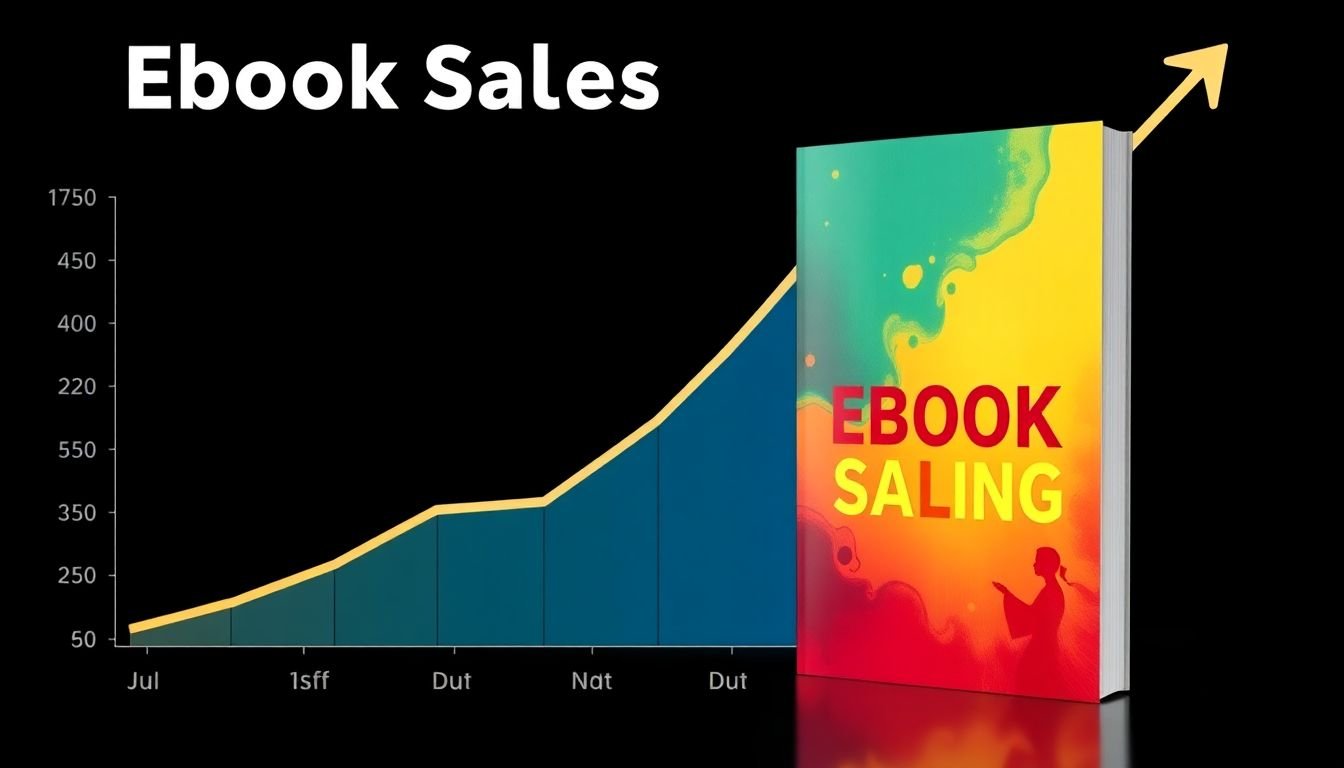
The Impact of eBook Design on Sales and Marketing
In the digital age, the impact of eBook design on sales and marketing cannot be overstated. A well-designed eBook can significantly enhance its appeal, making it more likely to catch the eye of potential readers and ultimately drive sales. The first step in understanding this impact is to recognize the importance of visual appeal. Just as a book’s cover is the first point of contact in a physical store, the design of an eBook’s cover and interior pages are crucial in the digital realm. A visually appealing cover can entice potential readers to click and learn more, while an engaging interior design can keep them hooked, encouraging them to make a purchase.
The role of eBook design in marketing is multifaceted. Firstly, it aids in branding. A consistent design across an author’s or publisher’s eBooks can help build a recognizable brand, making it easier for readers to find and choose their titles. Secondly, it enhances user experience. An eBook designed with readability in mind, featuring clear typography, appropriate use of white space, and intuitive navigation, can significantly improve the reading experience. This can lead to positive reviews and word-of-mouth marketing, both of which are invaluable in driving sales.
Engaging content is not just about the text; it’s about how that text is presented. This is where eBook design truly shines. Interactive elements like hyperlinks, multimedia content, and interactive charts can bring the text to life, making it more engaging and shareable. Moreover, eBook design allows for personalization, with features like adjustable font sizes and colors, making the reading experience more comfortable and enjoyable for a wider range of readers.
Lastly, effective eBook design can also influence sales through strategic use of metadata and keywords. A well-designed eBook is not just visually appealing; it’s also optimized for search, making it easier for readers to find. This can significantly boost an eBook’s discoverability, leading to increased sales and marketing effectiveness.
In conclusion, eBook design is not just about making a book look good; it’s about creating a compelling, engaging, and user-friendly experience that resonates with readers and encourages them to make a purchase. It’s a powerful tool in the sales and marketing arsenal, one that can significantly enhance the effectiveness of any eBook-related campaign.